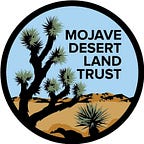Springing forward: Resilient native plants return
This edition of the Dorothy Ramon Learning Center January 2021 newsletter has been reprinted in full. Subscribe to the Dorothy Ramon Learning Center newsletter here.
Fires burned the Inland Southern California landscapes all around us in summer and autumn 2020. Nearly six months later, with little rain, native plants are growing back across the area’s charred Native American homelands.
White sage, yucca, basketry plants, and many other important traditional resources for food, medicine, tools, arts, and more, are coming back. Their resiliency is inspirational.
Elder Ernest Siva (Cahuilla-Serrano), president of Dorothy Ramon Learning Center, plays three traditional Southern California songs here. Although these songs are customarily sung, Ernest Siva likes to play bird songs and other traditional songs on the flute, as his late maternal great-grandfather Juan Ramon once did. He plays near one of his elderberries, called kuuht in Serrano, hunqwat in Cahuilla. The shrub burned in the 2020 Apple Fire, along with much of the wild lands surrounding his canyon home. Now it’s growing back.
To see what this elderberry looked like just before the summer fire, and explore its many powerful gifts and uses, see the Dorothy Ramon Learning Center’s “Elderberry Memories” from July 8, 2020.
The canyon comes back
Snow Creek: “Inspiration and hope”
By Christine Giles
Editor’s note: Christine Giles, who has lived in the Snow Creek area of the Coachella Valley for more than 20 years, shares some of her discoveries as she watches her area recover.
On the afternoon of September 17, 2020, a Desert Water Agency truck exploded, igniting a fire that spread to 1,200 acres in less than an hour. Called the Snow Fire, it quickly traveled south and west, up Snow Creek Canyon located at the base of the north face of Mt. San Jacinto. While no structures burned, the fire consumed more than 6,200 acres of vegetation and in an area of cultural significance. The area is the ancestral homeland of the Teshana Wanakik lineage of Cahuilla Indians (1).
According to the late Chief Francisco Patencio, Evan ga net, the Fox, gave the name Na hal log wen et (center of the open place) to Snow Creek when he crossed it in his travels in early times. (2)
In late December, the scorched land began to show signs of recovery. Along the western slope of the mouth of the canyon, juncus textilis or basket rush, called seily in Cahuilla (3) and used in basket weaving, is proliferating in several areas.
This area is saturated by a series of springs, and bright green leaves are beginning to sprout from the base of Fremont cottonwood, hollyleaf cherry, Western sycamore, and other trees. Beavertail cactus, deergrass, encelia (brittlebush), and other scrubs, grasses, and trees are showing signs of survival and recovery. There also are signs of wildlife, although still scarce, including coyote scat and possibly rabbit, what may be a red-tailed hawk feather, and spider webs.
These are hopeful signs and as winter turns to spring, more native plants should begin to emerge, including sages, chia, yerba santa, willows, desert apricot, white alder, and some of the 38 trees, 64 grasses, 141 shrubs, and more than 270 annual and perennial herbs listed as native to the area, according to calflora.org (4).
I plan to continue exploring Snow Creek Canyon, as it has become an experience symbolic of hope and inspiration.
Notes:
1. Bean, Lowell John, Sylvia Brakke Vane, and Jackson Young, 1991, The Cahuilla Landscape: The Santa Rosa and San Jacinto Mountains, Ballena Press, p. 65.
2. Patencio, Francisco. 1943. Stories and Legends of the Palm Springs Indians. As told to Margaret Boynton. © Palm Springs Desert Museum, p. 54.
3. Bean, Lowell John, and Katherine Siva Saubel, 1972, Temalpakh: Cahuilla Indian knowledge and usage of plants, Malki-Ballena Press, pp. 80–81.
4. Calscape.org and Calflora.org, accessed January 15, 2021.
